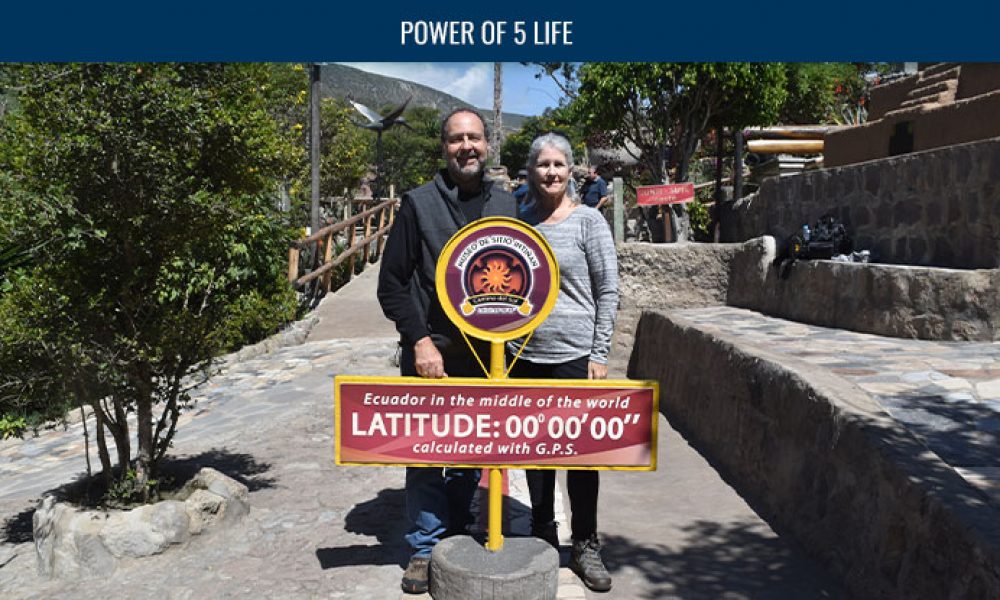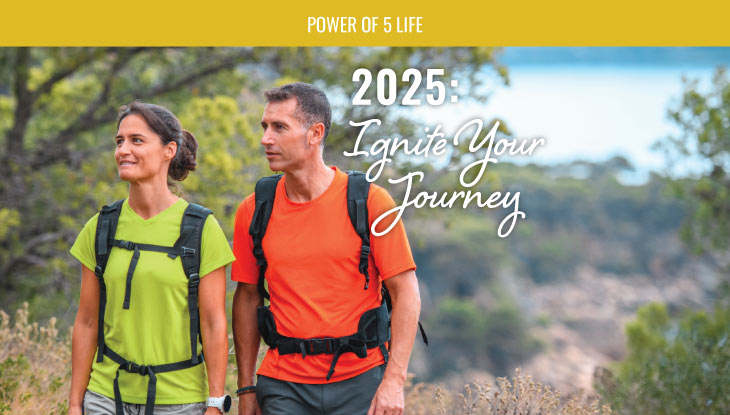Living Longer and Stronger
This year, 2022, has provided my wife Melissa and me with a great deal to reflect upon. Also, with every research study and report I read, it becomes apparent that sweat, fitness, remaining active, and maintaining balance are crucial components for living longer and stronger.
Our Family and the Power of 5
During the past three to four months, I have listened to a flurry of podcasts all of which focus on the Power of 5 components. Of all the constituents of the Power of 5 formula, Sweat is the one in which most of my family members participate. However, they are all raising children which presents a major challenge for them to integrate Sleep, Socialization and reduce Sweets and Stress. In my life, there have been many momentous events this year which distracted me from my own focus on Sweat (the “S” of the Power of 5 Formula).
Even so, Melissa walks regularly and has personal training sessions twice a week. I walk with her, do intensive training, and integrate indoor cycling four to five times a week.
This is the point where motivation and intention come into play. Developing a mindset based on the positive benefits of maintaining fitness, muscle strength/mass, and balance is crucial.
Our Roots/DNA and Living Longer
Our genes contribute only 20-25% toward our longevity. The remaining 75-80% reflects on our lifestyle. I encourage everyone to think about their genes as they go through life, but not become totally obsessed with them; lifestyle plays a more important role.
- If you have “bad” genes, do something about it to address and prevent health conditions that family members might have suffered.
- If you have “good” genes/DNA, rejoice and protect them. Take preventive measures that might detect genetic variations that could lead to illness.
- The bottom line is to make lifestyle adjustments to remain healthy for as long as you can.
A Personal Story: My Mother-in-law’s Health
Here is a personal story I want to share as an example of something to avoid. At an early age, my mother-in-law faced the reality that members of her family suffered from high blood pressure, vascular disease, and strokes. It motivated her to see a physician and take medication to prevent a premature death.
I watched her age and was dismayed at her lack of physical activity over the latter years of her life. Many of us in the health and fitness arena know that as adults age they lose 10% of their muscle mass each decade. As the decades passed, my mother-in-law became less and less active. Her muscle mass dropped 40% in the last four decades of her life. For whatever reasons, she did not succumb to the chronic disease others in her family suffered. Was she lucky? I am not so sure.
Her lack of exercise or physical activity led to a progressive physical decline. When she turned 97, she used a walker all the time and needed support to do many of her daily activities. She ate her meals at her assisted living facility in her room because of her overall loss of strength and lack of desire to socialize with others.
This scenario brings me to this year. In her frail state, it took little for her to fall and fracture her hip on her 98th birthday. To everyone’s surprise she survived her hospitalization but continues to face a very high one-year mortality rate because of depleted total body muscle mass. She lacks the core strength to sit up in bed let alone get out of bed on her own. She depends on others for help with all her daily and bodily functions. What a regrettable state of affairs.
Many wish for or hope that their last days on earth will be peaceful, without pain and suffering. They hope to have a sudden death at home in their own bed. Most of my patients over the years had been adamant about avoiding death in a hospital.
My Challenge to You
While we never have simple choices, we can choose to remain active and fit to avoid the conundrum facing my mother-in-law. A key is to develop a lifelong mindset of fitness, conditioning, and daily physical activity.
I urge you to reflect on your current level of physical activity and conditioning and choose to make adjustments to avoid the situation my MIL now faces at age 98. I know few people reach such a pinnacle of age, but she has. Let’s make sure your own life has you living longer and stronger.
To a long and healthy life,
David Bernstein, MD



